Search Images
Browse Content (p. 1544)
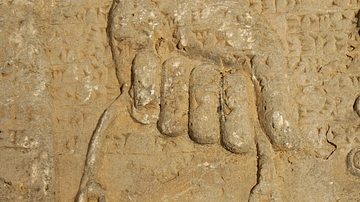
Image
Assyrian Ceremonial Bucket (Banduddu)
This is a close-up image of an Assyrian bucket (banduddu) held by a protective spirit (Apkallu). During certain ceremonies, this bucket was filled with a fluid and the Apkallu dips a pine cone (mullilu) into it; the Apkallu then sprinkles...

Image
Assyrian Bracelet
A close-up image of a rosette-type bracelet. This is part of a large alabaster bas-relief which depicts an eagle-headed and winged protective spirit, Apkallu or Sage. The rosette lies at the ventral surface of the left wrist of the protective...
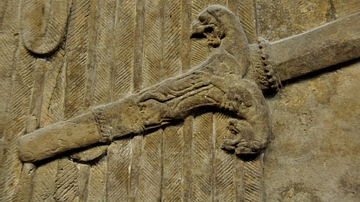
Image
Assyrian Sword Sheath
A close-up image of the lower end of an Assyrian sword's sheath.The sheath's end has been decorated with bodies of 2 roaring lionesses. The sword depicted on this alabaster bas-relief belongs to an Assyrian attendant and the feathers on...

Image
Tribute Bearers Before Ashurnasirpal II
This alabaster bas-relief was placed on the facade of the throne room. It depicts 2 men as tribute bearers. The one of the left wears a turban of a kind worn in the north-west Syrian territories; he raises his hands in token of submission...
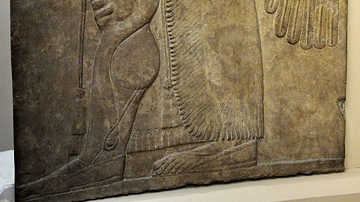
Image
An Assyrian Apkallu Carrying a Goat
This alabaster bas-relief depicts a human-headed and winged man, Apkallu or Sage, carrying a goat. He wears a sandal carries a goat with his left arm and what appears to be a palm branch in his right hand. Note the prominent muscular and...
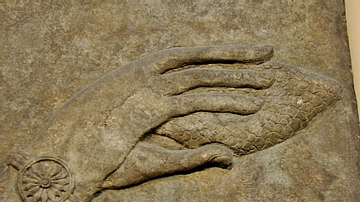
Image
Assyrian Mullilu
This is a close-up image of a hand carrying an Assyrian mullilu; mullilu is an Akkadian word which means a purifier. This object, most likely a pine cone, was dipped into a certain liquid and then sprinkled on the Assyrian king and his courtiers...
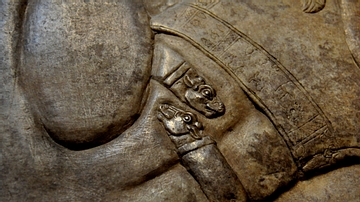
Image
Assyrian Armlet
A close-up view of the right arm of a human-headed and winged protective spirit, Apkallu (or Sage). There is an armlet which embraces the right biceps muscle. The armlet's ends are sheep-headed. Note the decorations on the lower end of the...
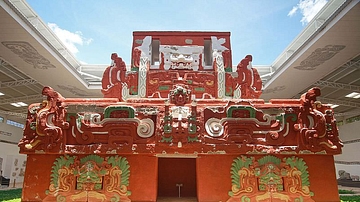
Image
Rosalila Temple, Copan
A reconstruction of the Maya temple known as the Rosalila, excavated from within Structure 16 at Copan. c. 8th century CE.
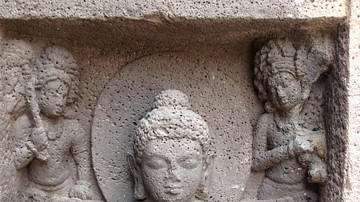
Image
Seated Buddha Figure Displaying Dharmachakra Mudra
Here, the figure seated in the lotus position features two important details: first, a halo, indicating that Prince Siddhartha has attained Enlightenment and so has become the "Buddha", or the Enlightened One, and second, the Dharmachakra...

Image
The Cliffs of Moher, County Clare, Ireland
The Cliffs of Moher are on the west coast of Ireland and reach 214m (702 feet) at their highest point. On a clear day one can see the Aran Islands, Galway Bay, the Twelve Pins, the Maum Turk mountains in Connemara, and the Dingle Peninsula...